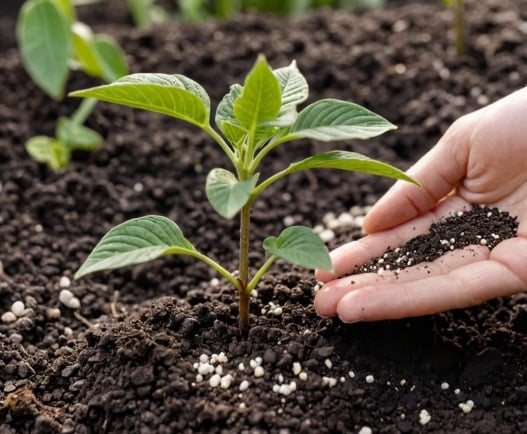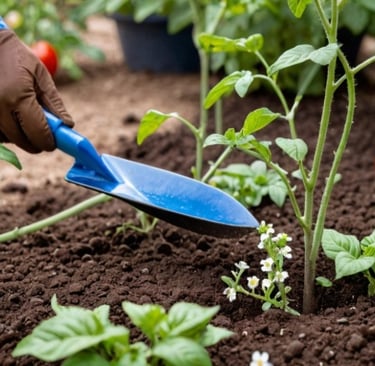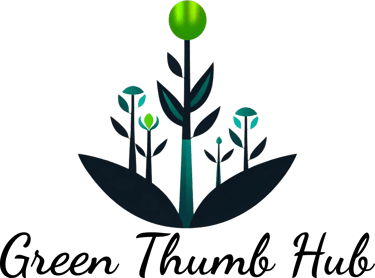How to Use Fertilizers in the Garden: Complete Guide for Every Plant Type
Proper fertilization is essential for maintaining a healthy and productive garden. Whether you're cultivating vegetables, ornamental plants, or a lush lawn, understanding how and when to use fertilizers can significantly improve plant health and yield. In this guide, we’ll explore the types of fertilizers, application methods, and provide specific recommendations for different plant groups — all based on best practices in modern gardening.
7/28/20254 min read


The Role of Fertilizers in Growing Vegetables and Small Fruits
Fertilizers are essential for supporting healthy growth and high yields in vegetable and small fruit gardens. However, with so many options available, it can be challenging to choose the right one for your plants.
Organic fertilizers are derived from natural sources such as compost, aged manure, or bone meal. Mineral-based materials like ground limestone and rock phosphate also fall into this category. These fertilizers work gradually, enriching the soil over time and supporting long-term soil health.
In contrast, synthetic (or conventional) fertilizers are manufactured using naturally occurring mineral deposits or nitrogen extracted from the atmosphere. Common examples include ammonium sulfate and ammonium phosphate. These fertilizers are typically fast-acting and provide nutrients in forms that are immediately available to plants.
Organic vs. Synthetic: Nutrient Availability
Synthetic fertilizers usually contain a limited number of key nutrients — primarily nitrogen (N), phosphorus (P), potassium (K), sulfur, and sometimes micronutrients. Since these nutrients are in a readily available form, they are quickly absorbed by plant roots. This makes them a practical choice when rapid results are needed, such as at the start of the growing season.
However, because these nutrients dissolve quickly, they can easily leach out of the soil — especially after rain or irrigation — which may require multiple applications during the season unless a slow-release formulation is used.
Organic fertilizers typically offer a wider range of nutrients but in lower concentrations. These nutrients are not immediately available to plants and must first be broken down by soil microbes. This biological process takes time, especially in cool or inactive soils, which can delay nutrient availability in the early stages of growth — particularly for nitrogen.
Choosing the Right Fertilizer for Your Garden
Selecting between organic and synthetic fertilizers depends on your specific gardening goals, plant types, and soil conditions. Organic options improve soil structure and microbial activity over time, making them ideal for sustainable gardening. Synthetic fertilizers provide faster results and more precise nutrient delivery, which can be beneficial for correcting deficiencies quickly.
For best results, consider combining both approaches: use organic matter to build long-term soil health, and supplement with targeted synthetic fertilizers when quick nutrient access is needed.
Benefits and Cautions of Organic Fertilizers
Benefits of organic fertilizers:
They don’t form a hard crust on the soil surface like some synthetic fertilizers.
They improve water movement and gradually enhance soil structure.
They support beneficial soil microbes and improve overall soil health.
Things to consider:
Organic fertilizers usually cost more and deliver lower nutrient concentrations per pound.
Fresh manure can harm plants — it may contain excess salts, weed seeds, or harmful pathogens.
Safety guidelines for raw manure (organic standards):
Wait 120 days before harvesting crops that touch the soil (e.g., lettuce, onions, beets).
Wait 90 days for crops where the edible part doesn’t contact soil (e.g., corn, pole beans).
How Much Nitrogen Does Your Garden Need?
One of the most common gardening questions is: How much nitrogen should I apply?
The general recommendation is 3 pounds of actual nitrogen per 1,000 square feet of vegetable garden per year.
To calculate how much fertilizer to apply, use the first number in the fertilizer’s N-P-K ratio. For example, a fertilizer labeled 12-11-2 contains 12% nitrogen.
Calculation example:
To apply 3 pounds of nitrogen using a 12% nitrogen fertilizer:
→ 3 ÷ 0.12 = 25 pounds of fertilizer per 1,000 sq. ft.
Examples of Fertilizers and Their Nitrogen Content
Here are some common nitrogen-rich fertilizers, both organic and synthetic, along with how they behave in the soil:
Blood Meal (12.5-1.5-0.6): A high-nitrogen organic fertilizer that releases nutrients slowly over 2 to 6 weeks.
Feather Meal (~12% N): Another organic option; breaks down faster than blood meal, providing a quicker nitrogen release.
Urea (42–46% N): A synthetic fertilizer that offers a concentrated nitrogen source, ideal for rapid nutrient uptake.
16-16-16 Fertilizer: A balanced synthetic fertilizer. To apply 3 pounds of actual nitrogen:
→ 3 ÷ 0.16 = 19 pounds per 1,000 square feet.
Note: When adding fresh organic matter (like straw-heavy manure or undecomposed cover crops), soil microbes will use nitrogen to break it down. This process can temporarily reduce nitrogen availability for your plants, leading to pale foliage and stunted growth.
Fertilizer Sources for Other Key Nutrients
Phosphorus (P) – For root growth and flowering:
Rock Phosphate: 20%–33% phosphorus
Bone Meal: 15%–27% phosphorus
Colloidal Phosphate: 17%–25% phosphorus
Potassium (K) – For overall plant health and disease resistance:
Kelp Meal: 4%–13% potassium
Wood Ash: 3%–7% potassium
Granite Meal: 3%–6% potassium
Greensand: Around 5% potassium
Reducing Soil Acidity: Calcium-Rich Amendments
If your soil is too acidic, adding calcium-rich materials can help balance pH and improve nutrient availability. Common amendments include:
Agricultural Lime
Dolomite Lime (adds both calcium and magnesium)
Gypsum
Ground Clamshells or Oyster Shells
Wood Ashes (also adds potassium)


Conclusion: Feed Your Garden with Purpose
Choosing the right fertilizer — and using it correctly — is essential for healthy plant growth, productive harvests, and long-term soil health. Whether you prefer organic amendments like compost and bone meal or opt for fast-acting synthetic options, understanding the nutrient content and how it affects your soil is key.
Be mindful of your garden’s specific needs, apply nutrients based on soil tests and plant requirements, and always consider the balance between immediate results and long-term sustainability. With a thoughtful approach to fertilizing, you’ll support not only your plants but the entire ecosystem beneath your feet.
